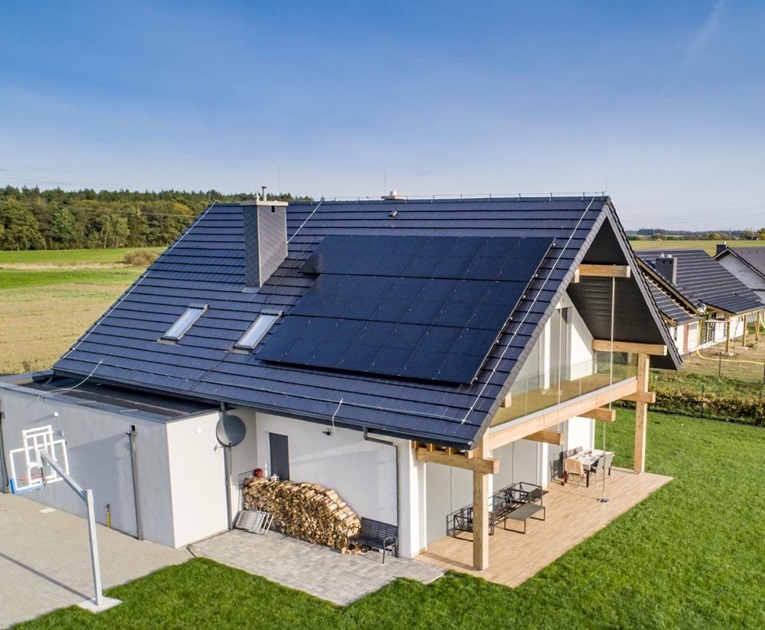In the field of renewable energy, solar energy has become an important force in global energy transformation due to its clean and endless characteristics. JA Solar panels are an efficient, renewable energy solution that uses sunlight to convert into electricity. As the core component of a solar panel, material selection plays a vital role in its performance and efficiency. This article will introduce in detail the materials of JA Solar panels.
JA Solar panels mainly use crystalline silicon materials, including monocrystalline silicon and polycrystalline silicon. Monocrystalline silicon solar panels are popular for their high energy conversion efficiency and good low-light response characteristics, while polycrystalline silicon also has a place in the market due to its relatively low cost and high material utilization rate. Through continuous research and improvement of silicon materials, the photoelectric conversion efficiency of its solar panels continues to lead.

In addition to silicon materials, special anti-reflective coatings are also used in JA Solar panels. This nanoscale film can effectively reduce the reflection loss of light on the silicon surface, thereby increasing the absorption rate of light and improving the overall power generation efficiency. In addition, through advanced surface passivation technology, the recombination of electron-hole pairs can be reduced, further improving the open circuit voltage and overall performance of the solar panel.
Regarding the selection of back sheet materials for the panels, JA Solar panels use extremely weather-resistant materials, such as polyvinylidene fluoride (PVDF) and other synthetic polymer materials, to ensure that the panels can maintain stable operation in various harsh environments. These materials not only have good mechanical strength but are also highly resistant to UV rays, thermal aging, and chemical corrosion.
The packaging process of the battery panels is equally important. Encapsulation films such as ethylene-vinyl acetate copolymer (EVA) or polyvinyl butyraldehyde (PVB) are used to tightly combine the battery sheets with the front glass and back panel. These encapsulation materials not only provide sufficient light transmittance but also ensure the long-lasting stability of the panels under temperature changes and mechanical stress.
Conductive materials are also an integral part of battery panels. Silver paste is a key material for making cell electrodes and connecting individual cells. The high-quality silver paste used in JA Solar panels ensures good adhesion and excellent conductivity of the electrodes, thereby reducing internal losses and improving the fill factor and overall efficiency of the panels.
In addition, the frame material of the battery panel is made of aluminum alloy, which is not only structurally stable but also lightweight and corrosion-resistant, providing solid protection for the entire panel. At the same time, the surface of the aluminum alloy frame is usually anodized to enhance its wear resistance and aesthetics. During the installation process of the battery panels, a variety of installation materials and accessories are also provided, such as stainless steel or galvanized steel brackets, as well as bolts, nuts, and other connectors for fixing the battery panels. These installation materials have been strictly selected and tested to ensure ease of installation and long-term stability.
The material selection of JA Solar panels plays a vital role in their performance and efficiency. Their excellent performance and characteristics make JA Solar panels an efficient and reliable energy solution. With the continuous advancement and innovation of science and technology, I believe that the materials of JA Solar panels will continue to be improved and optimized to provide mankind with cleaner and more sustainable energy.
JA solar panel: an efficient, reliable and environmentally friendly solar power generation tool
JA Solar Panel Working Principle and Technical Analysis
JA solar panel installation and maintenance guide
Key factors to extend the service life of JA solar panels
What are the factors that affect the efficiency of JA solar panels?
JA solar panel efficiency cleaning guide
How efficient is JA solar panel?
How to choose a high-quality JA solar panel supplier
JA Solar Panel Shipping and Storage Guide
Explore the environmental advantages of JA solar panels
JA solar panel price and cost analysis
How to buy high-quality JA solar panels
Impact of environmental factors on JA solar panels
How to improve the working efficiency of JA solar panels in the rainy season
The importance of dustproof and waterproof design of JA solar panels
Are JA Solar panels a good choice for home solar?
Is the return on investment of JA Solar panels high?
What are the applications of JA solar panels?
How to choose the right JA Solar panels for your home?
Yana
yana@janewenergy.com

